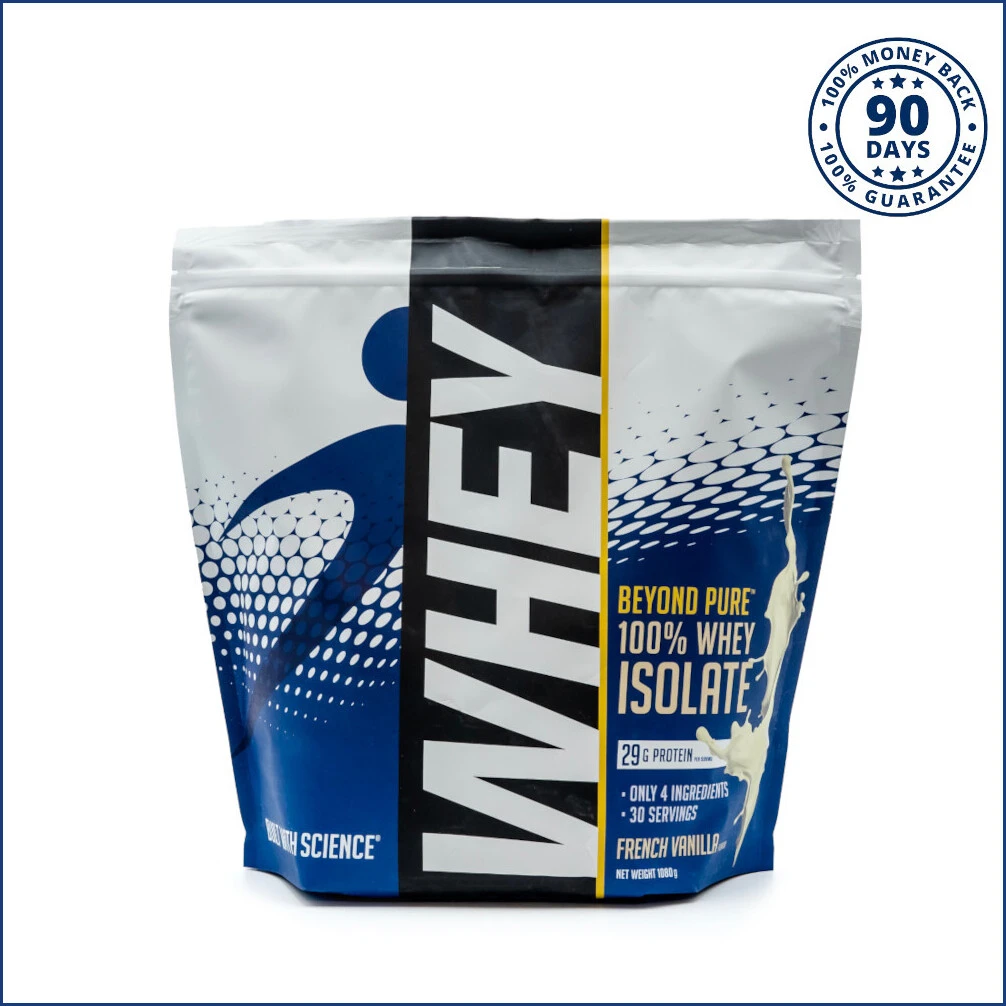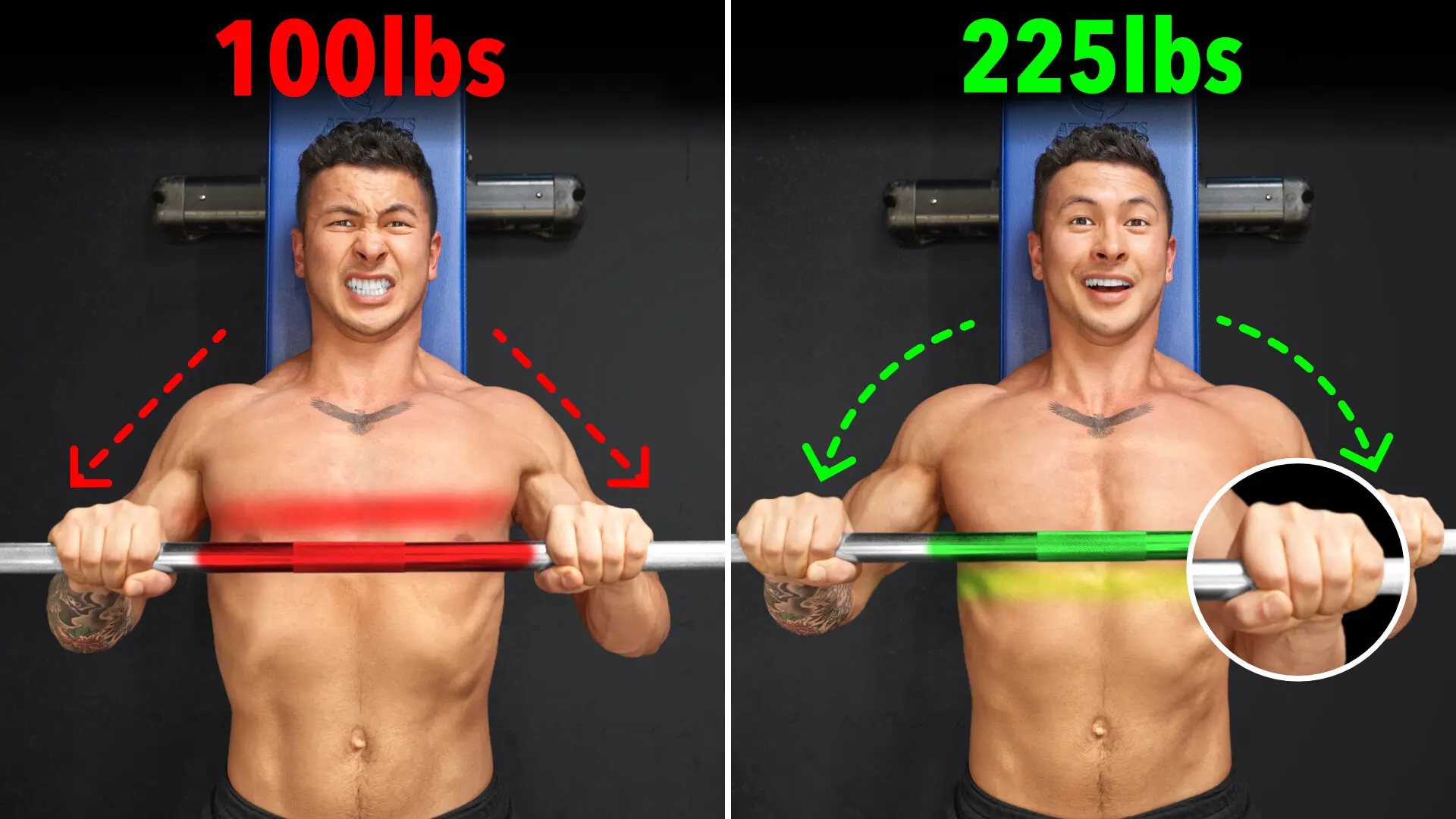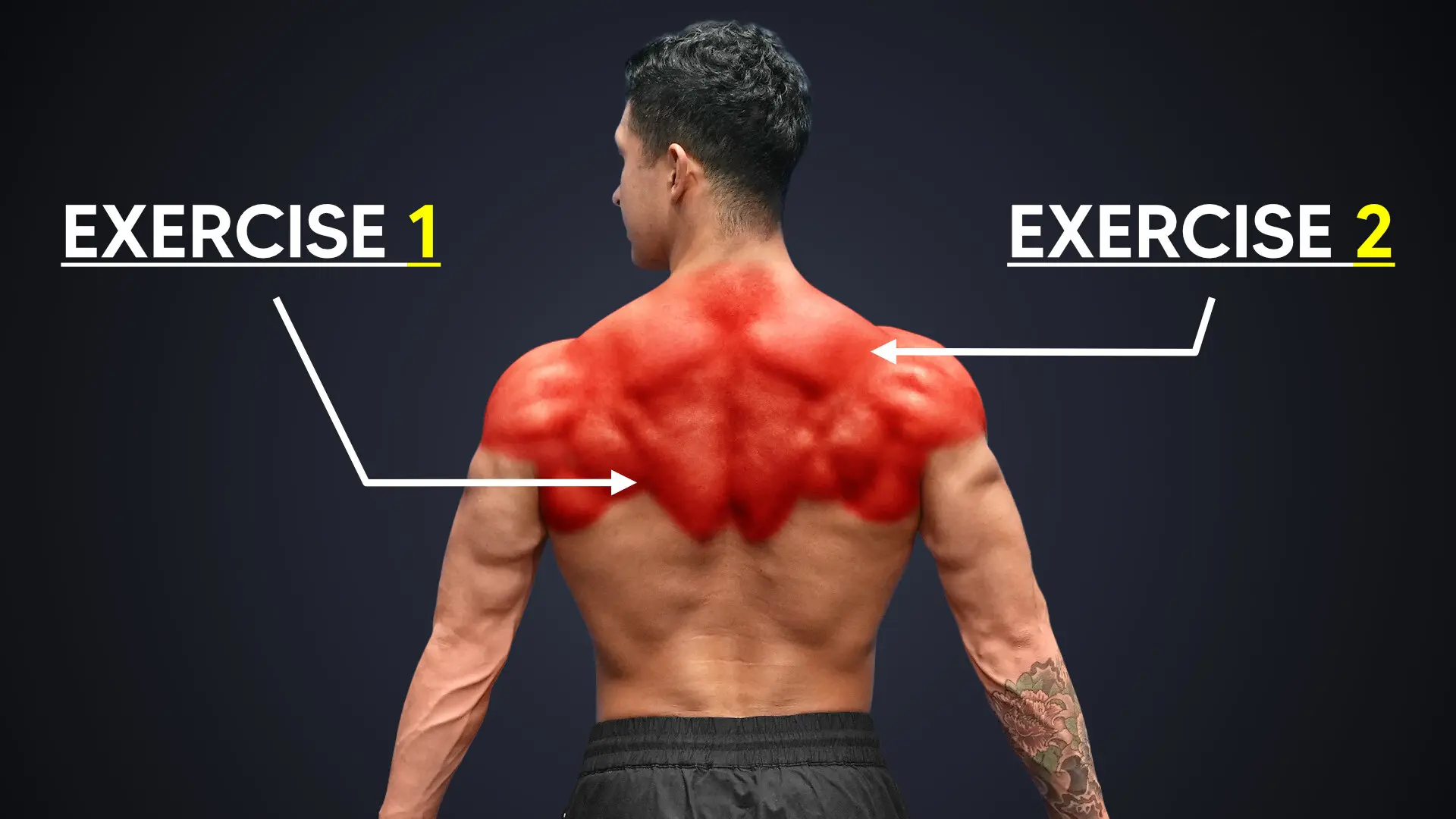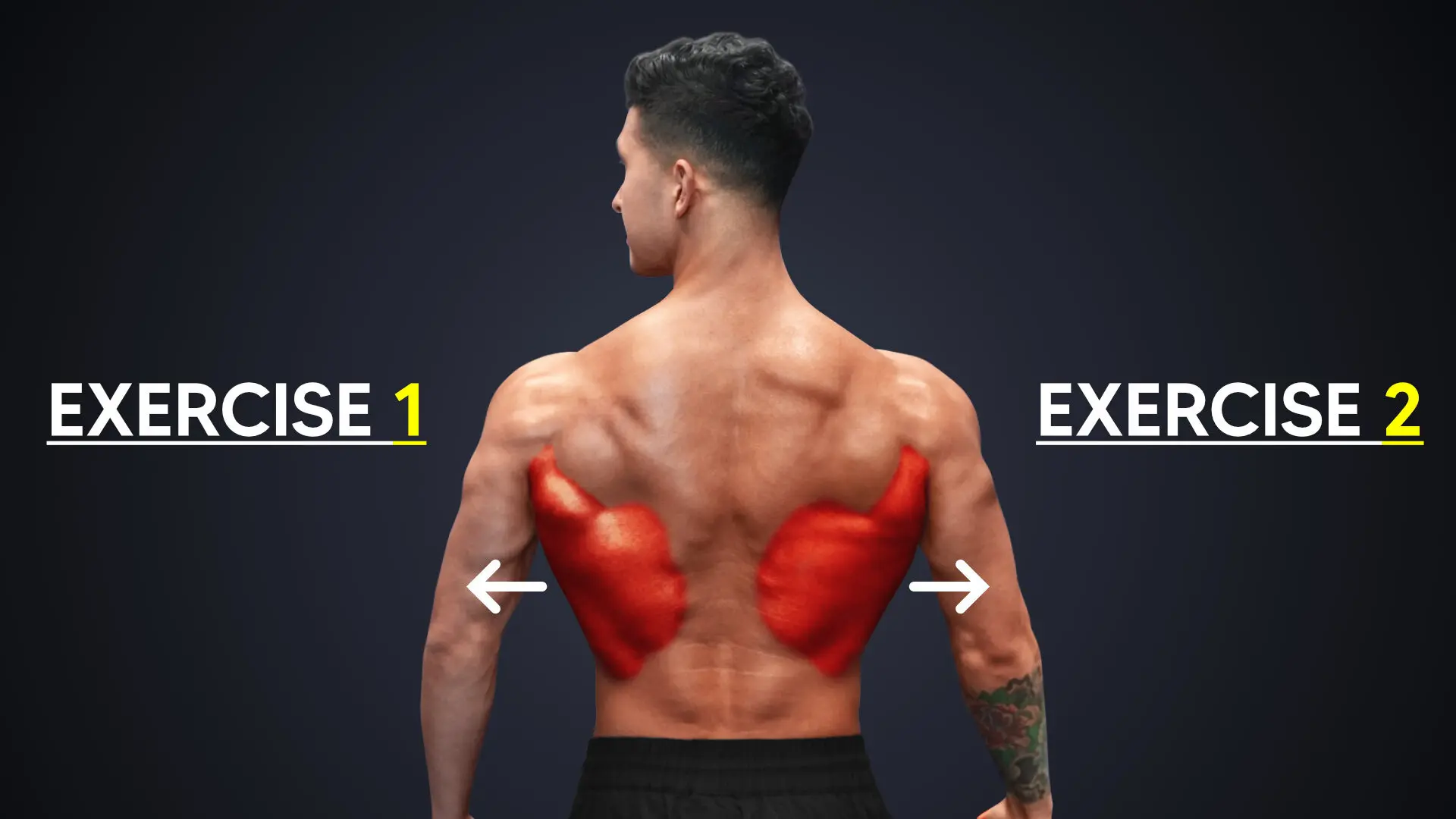
The ONLY 2 Lats Exercises You Need for A Wide Back
Want a wide back? These are the only 2 lats exercises you need.
This is called a V-taper.

And although it’s the best way to look jacked and create the illusion of a smaller waist, with and without a shirt, the lats are one of the toughest muscles to target.
I learned this the hard way. For years, I did heavy rows and wide-grip pull-ups and pulldowns. My strength went up, my upper back and arms got bigger, but my lats? Nonexistent. Leaving my dreams of a wide back unfulfilled.
But everything changed when I started using just 2 specific lats exercises.
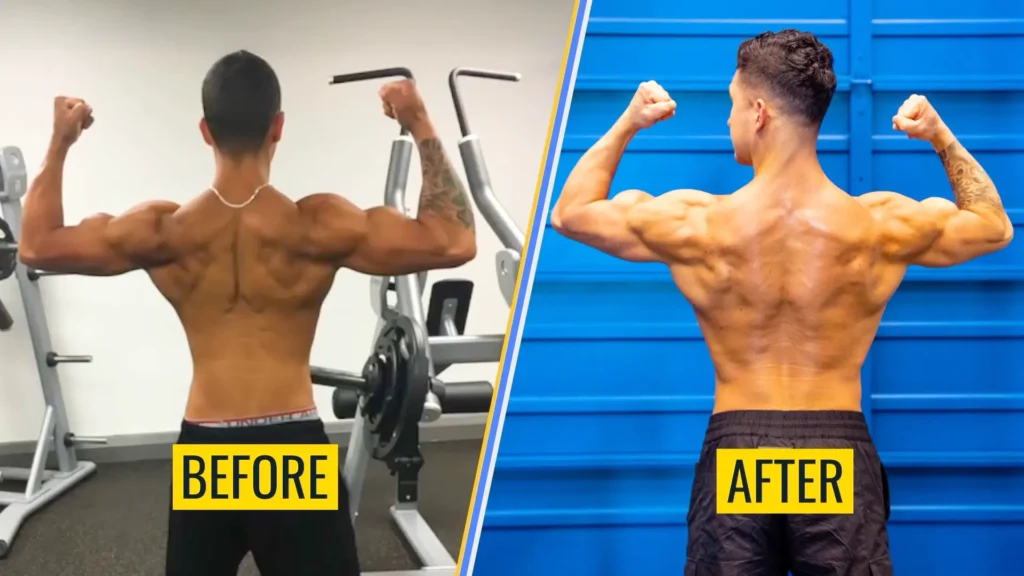
Exercises that even a world-leading biomechanist and a top natural bodybuilding coach swear by for building a wide back.
And the same transformation can happen for you if you do the three things I did for a wide back: Add these two exercises, use proper form, and apply the “bonus technique” I’ll reveal later.
Expert Answers: How To Get A Wide Back
Now, for this article, I couldn’t rely heavily on studies like I usually do.
Because while most research uses ultrasound to measure growth, the unique shape of the lats require an MRI. A machine that can cost up to $2,000 an hour to use.
Meaning there are barely any reliable, conclusive studies on how to actually grow the lats for a wide back.
So to get real answers, I teamed up with some experts.
One of whom is biomechanics expert Kassem Hanson:

“Because there's so many muscles that can extend the shoulder, you might be leaving the lats with four or 5, 6, 10, 12 reps in the tank because that exercise isn't really specific to them.”
Coach Kassem is obsessed with finding the perfect exercise for each muscle.
Lower Lats Exercises
The first exercise he showed me to build a wide back during your back workout is for the lower lats, which is easily the most stubborn part of the muscle, because it takes a very specific exercise and angle to work it.
Kassem:
"When I started working with physique competitors, that was probably one of the number one things. And also, it wasn’t just the lats in general—it was specifically that people struggled with the lower portion of the lats. People would be like, ‘Oh, I have high lats.’ And it’s like, well, do you really have high lats, or do you just have underdeveloped lower, or the iliac division of the lats?"
Kassem explained how the fibers in this area run downwards, so your best bet is some kind of overhead pulldown.
But not the one you’re probably thinking ...
Kassem:
"We're generally for lats going to want to do something where we're pulling the arms towards the body basically tight, it doesn't mean you have to be squeezing in. It's just the path that you're driving. Your elbows should be relatively close to your body."
This explains why standard lat pulldowns don’t cut it if you want a wide back.
You might have heard, "If you want a wide back, use a wide grip."
But when you go wide, your elbows flare outward, shifting the tension onto your upper back.
The lats are still working, but never actually reach failure.
That explains why, after years of wide grip pulldowns, your upper back might look great, but your lats could still be underdeveloped — exactly what happened to me, and why I never got a wide back.
Even bodybuilding legend and 6-time Mr. Olympia winner, Dorian Yates, with arguably the greatest lats in history, famously said he never did wide-grip pulldowns.
"You gotta pull narrow," he insisted.
And if that’s not convincing enough, just take a look at the lats on pro natural bodybuilder Alberto Nuñez standing next to me.
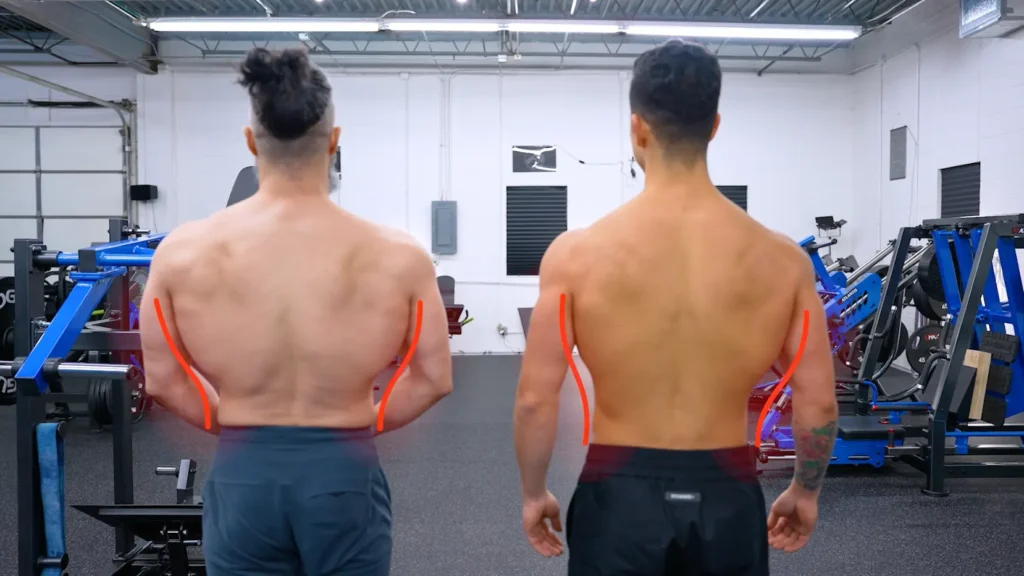
You wouldn’t believe it, but Alberto says his lats, especially the lower lats, used to be the weakest part of his physique.
That was, of course, until he started using the exercise I’m about to show you.
Grip Options
Let’s first look at some different grip options, depending on what you have available, saving my personal favorite option for last.
And don’t worry if you don’t have access to cables.
I’ll show you how to apply this to your pull-ups, too, for a wide back.
Overhand Narrow Grip
So the easiest way to instantly hit your lower lats for a wide back is by still using a lat pulldown bar, but with a narrow grip, about shoulder-width apart.
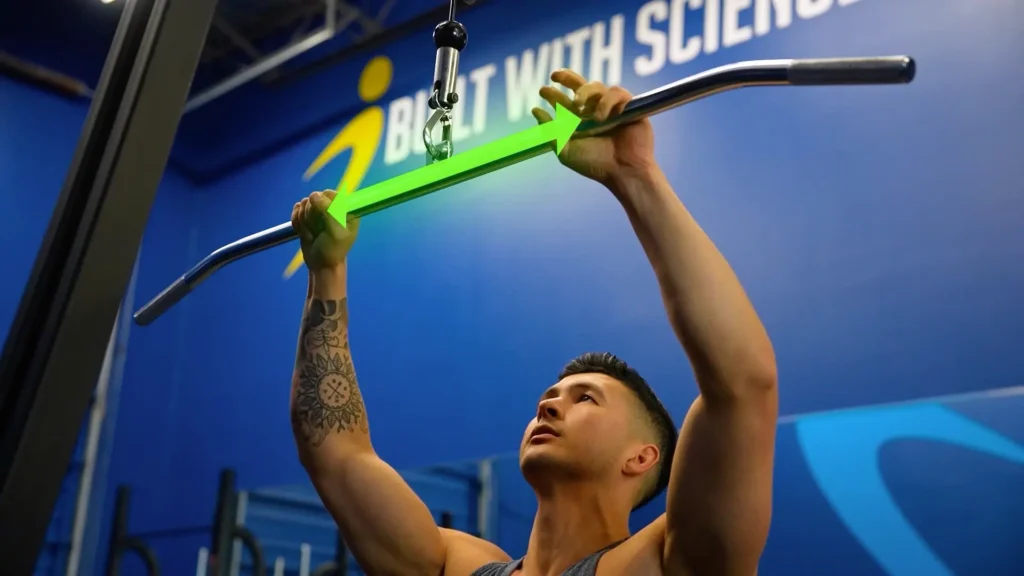
This allows your elbows to stay narrow.
Although you’ll need to watch out for wrist discomfort, especially at the bottom.
Underhand Narrow Grip
Which is why I prefer an underhand grip instead.
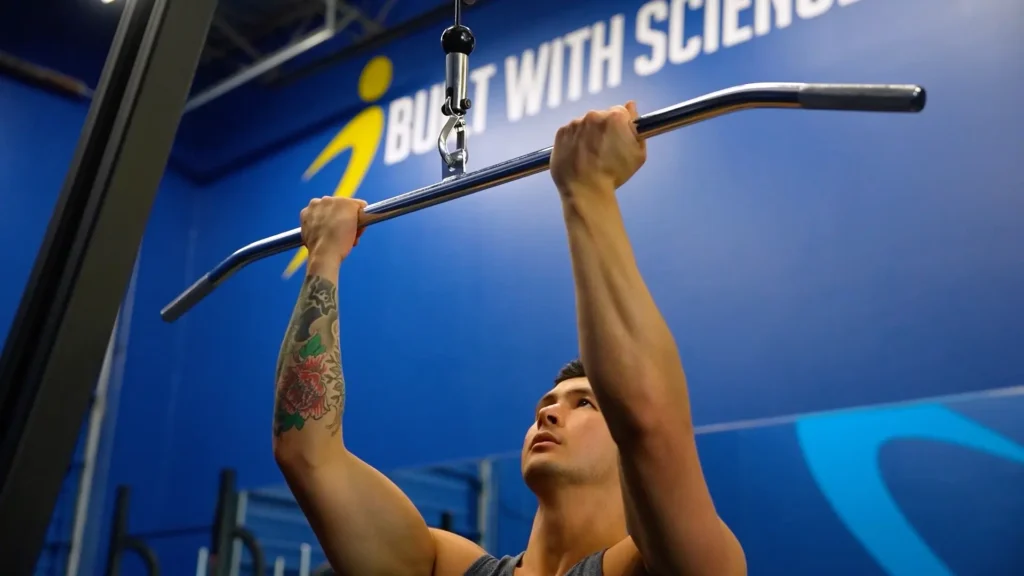
You might expect your biceps to dominate, which would happen if you do what everyone always does, but I'll show you a simple tweak here in a second that'll make sure your lats do all the heavy lifting.
Neutral Grip
If your gym has one, an even better option, though, is to switch to a neutral, shoulder-width grip.
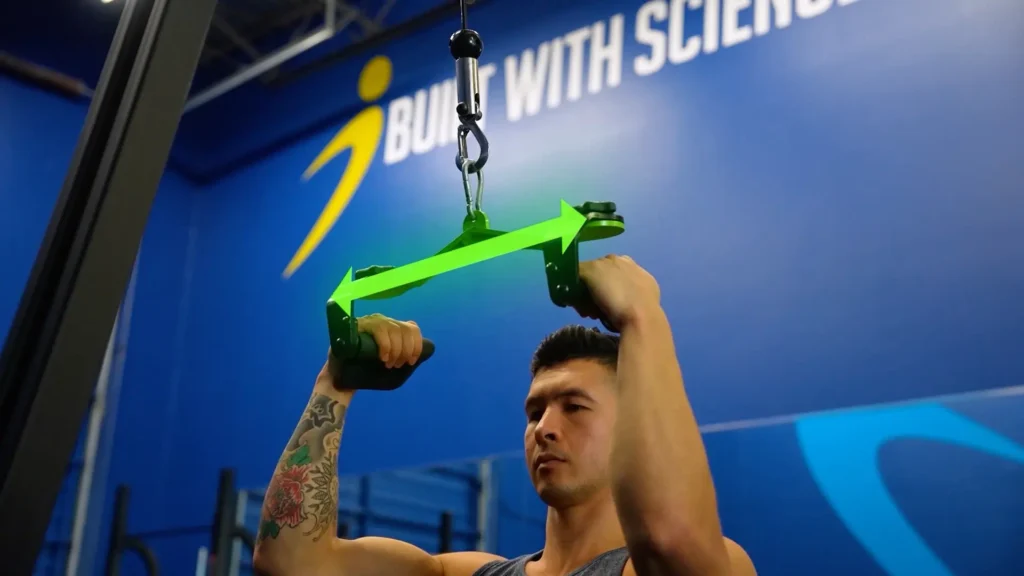
Your elbows stay close to your sides, and your wrists won’t be screaming at you along the way.
You could also use a V-bar handle, but I find it leads to some serious wrist discomfort at the bottom of each rep.
Lower Lats Exercise Alternative: Single-Arm Pulldowns
Or you could go with my current favorite, the single-arm pulldown.
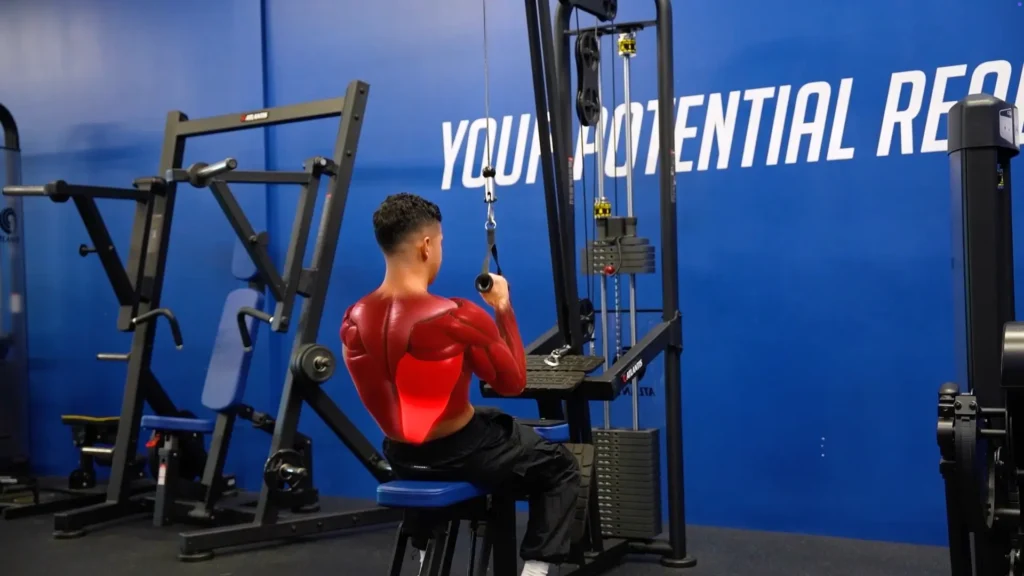
Find a single handle on a cable machine, then perform the pulldown one arm at a time, keeping your elbow tight to your side.
It’s a lot easier on the joints, and you can tweak your elbow and wrist position to feel this working with your lats.
But regardless of what grip you use, here's the real game-changer when it comes to getting a wide back.
It’s not just about pulling.
It's how you move your shoulders.
Don't Make This Mistake In Your Lower Lats Exercises
I used to be an "arm puller" — Kassem’s term for people whose pulldowns and rows end up working their arms way more than their back.
Here’s what I mean.
The lower lats don’t just pull the arm downwards.
One of their main functions is what’s known as “depression” of the scapula.
This is because the lats don’t just attach to the back — they run over the bottom point of your scapula, helping to anchor it to your torso.
As you let your shoulders rise to your ears, it pulls on the lats, bringing them into a full stretch.
From there, your lower lats help bring your scapula back down, allowing your shoulders to drop.
You can see this here when I flex my back.
As soon as I focus on shoving my shoulders down, my lats light up.
If you’re NOT doing this during pulldowns, you’re using more arms and less lats than you could be.
How To Properly Engage Your Lower Lats For A Wide Back
To apply it so you build the wide back of your dreams, you need to ensure you’re properly set up.
For the deepest lat stretch, lean your body back about 10-15 degrees.
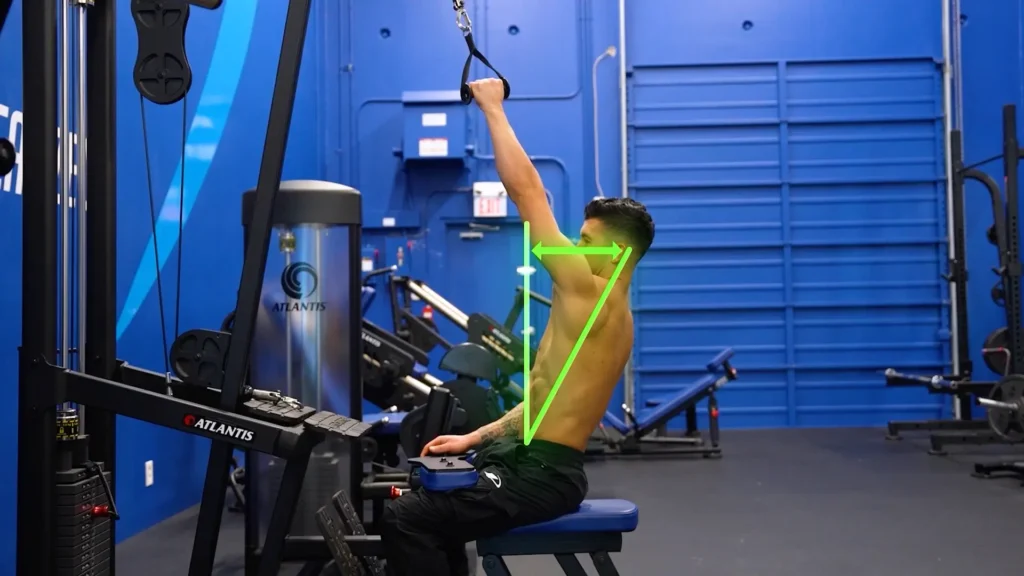
Then, with your arm straight, let your shoulder completely relax, allowing it to rise towards your ears.
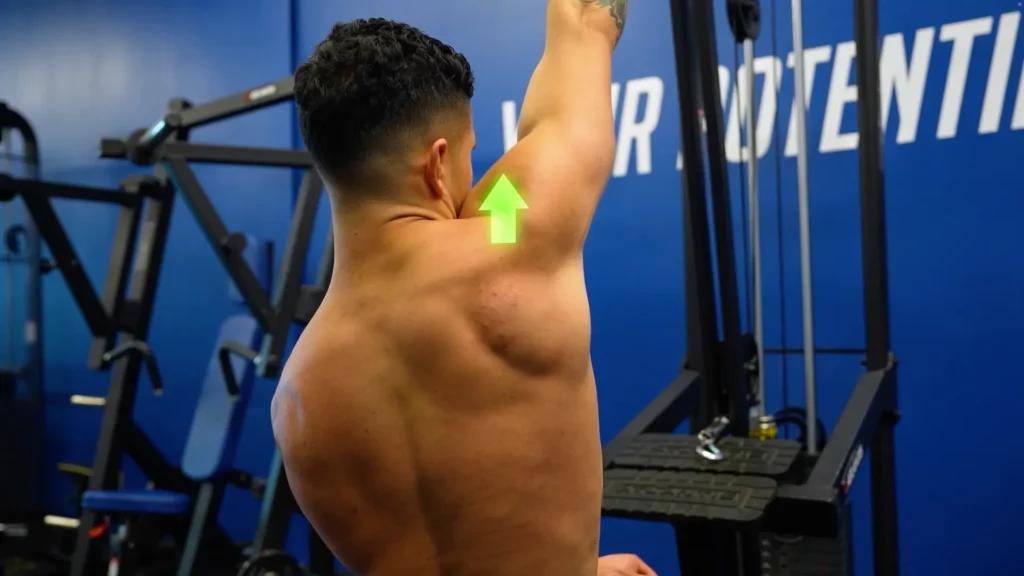
Try practicing the motion right now.
With your arm up, let your shoulder come up, and then shove it down so you can see what I mean.

Even just doing that, you’ll already feel your lats working.
So, as you pull, think about shoving your shoulder down rather than just moving your arms.
But to make sure you’re not just using your biceps, don’t pull the grip towards your chest.
Keep your elbow in front of you and pull your elbow down towards your hips.
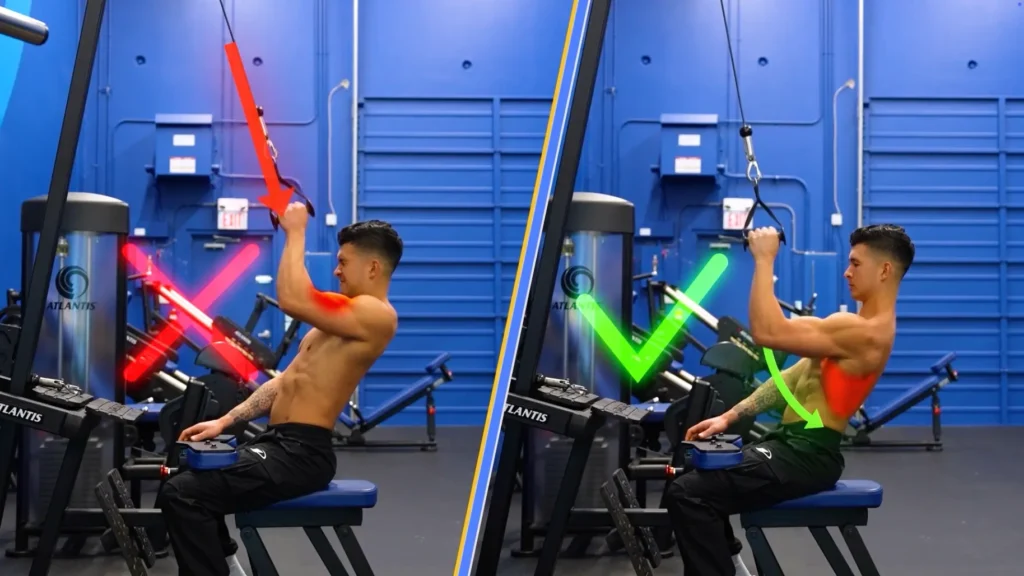
If you do this right, don’t be surprised if you suddenly can’t lift as much as you normally could. That’s totally normal. In fact, I had to cut the weight in half when I first started doing this.
What's An Alternative Exercise?
Now, unfortunately, without cables, there’s no good way to work the lower lats with dumbbells.
But you can still do this on a pull-up bar and see good results.
All you do is, rather than using a wide overhand grip, either use a narrow overhand grip, an underhand grip, or the best option — a neutral grip.
Lean back slightly, keeping your elbows in front, and pull them down towards your hips while pushing your shoulders down and away from your ears.
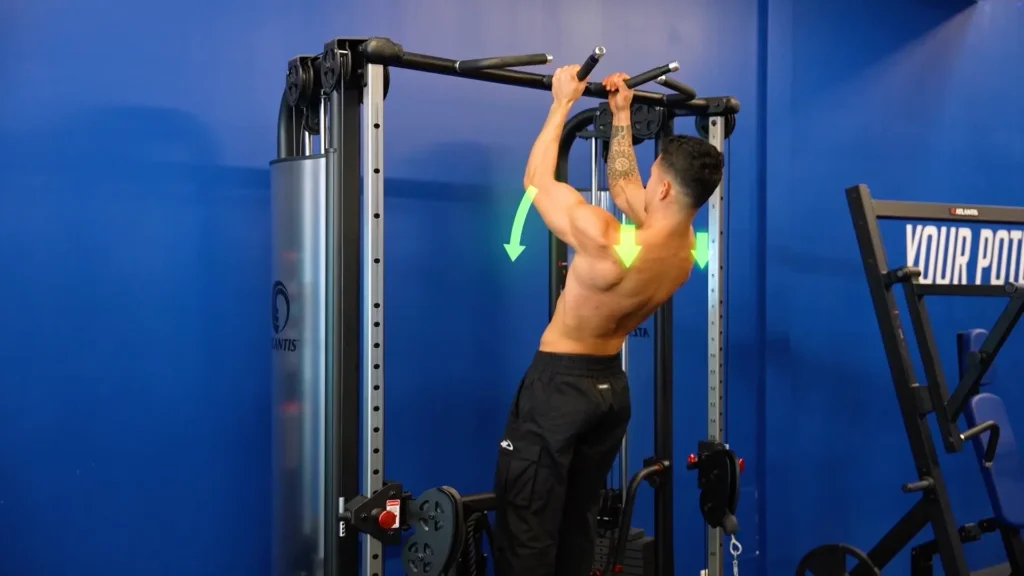
I actually had one of my good friends, Cam, use this pull-up alternative to bring up his lats for a wide back.
And every week, my Built With Science+ app would coach him, telling him when to do more reps or sets as well as modifying his diet.
And after 150 days, he not only gained about 5 lbs of muscle and dramatically improved his V-taper, but he did so while losing over 20 lbs of fat.
But here’s the thing — the lats are huge.
So if you want the kind of wide back that’ll make Greg Doucette want to run a “natty or not” video on you, then you’ll need this next exercise to light up your mid and upper lats as well.
Upper And Mid Lats Exercises
To target them, you’ll still want an exercise where your elbows can pull narrow, close to your body.
But unlike the lower lats, where the muscle fibers all run downward, the upper lats' fibers run more horizontally, with some fibers traveling just slightly downward.
That means we need a rowing exercise where the arm can pull at a slight angle downwards.
I’ll first show you a dumbbell version that works well, and then a cable version, which is my personal favorite.
Dumbbell Version
For the dumbbell version, use either an incline bench or elevate the back of a flat bench so that it angles downward. Then, set up just how you would with a single-arm dumbbell row, but the downward angle will now set your arm up so it’s pulling at a high-to-low angle.
Then, simply pull your elbow down and back towards your hips, keeping it tight to your sides.
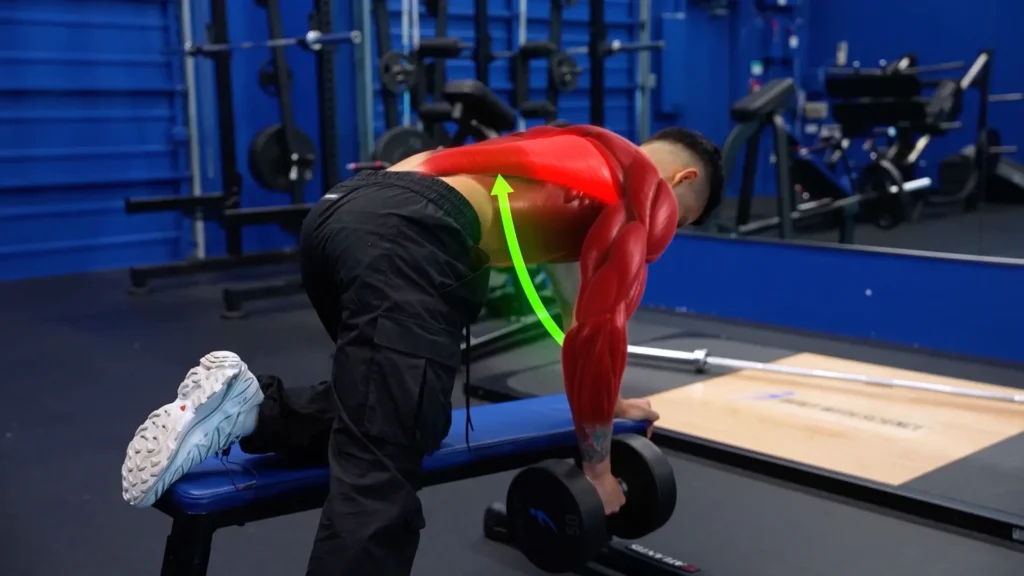
Now if you don’t find that as comfortable, doing this on a flat bench can still work.
But Kassem mentioned to watch out for a crucial mistake you need to avoid if you want a wide back.
Keep your chest level with the ground, and then simply focus on pulling your elbow down and back towards your hips, keeping it tight against your sides.
Cables Version
But for the best results for a wide back, I prefer using cables.
Now, Kassem’s gym has an adjustable slider, which allows you to set it up at a high angle, ensuring the arms pull at the perfect angle with the arm just above horizontal.
But if you don’t have that available like me …
You’ll have to create that movement at the torso.
You can see here that I’m sitting upright on a normal cable row, and my arms are horizontal.
Which won’t work the upper lats as much as we’d like. And that's bad news if you want to build a wide back.
So instead of sitting fully upright, lean slightly forward while keeping your core and back stable.
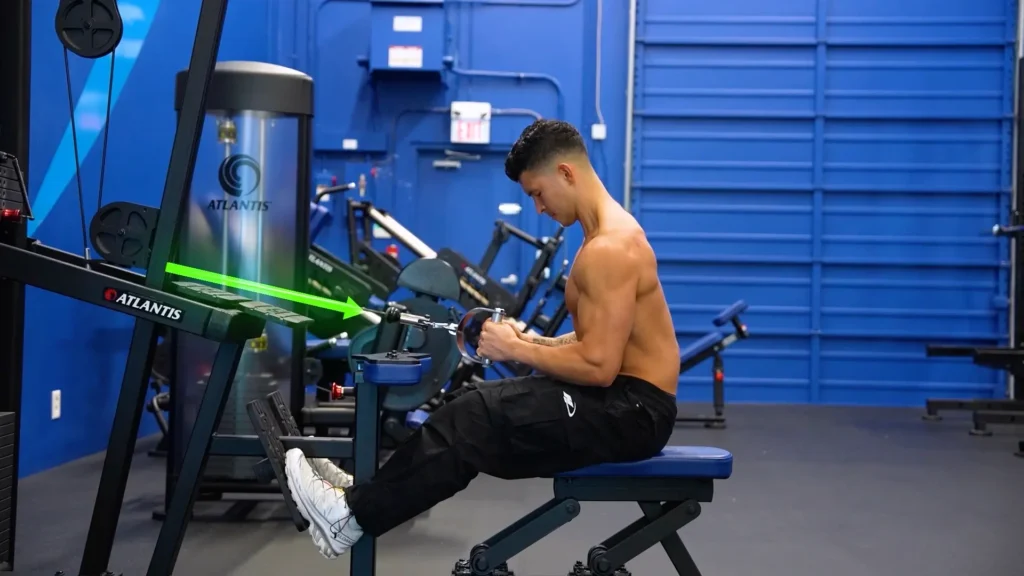
Notice how even though the cable height stays the same, my arm angle is now pulling from high to low, which mimics the same effect as if the cable were positioned higher up.
Kassem also mentioned putting your feet a bit lower on the plates can make this more comfortable.
When it comes to grip, shoulder-width neutral grip is once again ideal, but a V-bar can also work.
But just like with the pulldown exercise, all of this setup will be for nothing if you don’t pull the right way.
And this isn’t just advice for beginners. Because I was struggling with it too.
It’s the “arm pulling” mistake.
This happens when you pull the handle towards your chest.
Instead, think about pulling your elbows down and back towards your hips.
Kassem actually gave me an incredible cue that literally felt like it “unlocked” my upper lats.
He lovingly placed his hands against my triceps and had me think about pushing my triceps against his hand as I pulled.
So, every time you do this exercise, imagine I placed my beautiful hands right behind your triceps. Instead of pulling with your arms, your job is to push back into my hands as you row.
It’s actually a premium feature we're working on with my Built With Science+ fitness app.
Instead of just having detailed tutorials for you to watch in the gym, tap a button, and I’ll virtually appear, touching you in all kinds of places to maximize muscle activation. You can check it out later here, but by this point, you’ve got the 2 lats exercises you need to build a wide back.
But I’ve got one last bonus technique to share with you that you can apply not just to your lats exercises but your other muscle groups as well.
How To Get The Most Out Of Your Lats Exercises
So in most exercises, like a dumbbell chest press, for example, when you hit your limit, you’ll fail at the bottom. You physically can’t lift the weight.
But back exercises, e.g., lats exercises, are hardest at the end of the rep, so once your back muscles get tired they won’t be able to pull the weight all the way to get a full rep.
The problem is that most people end their sets there.
Instead, keep it going and take your lats to true failure by trying to get about 3-5 half reps until the weight just won’t budge. On pulldowns, you can take this even further after your half-reps by switching to keeping your arm straight and raising and lowering your shoulder to take your lower lats even past failure.
Doing these 2 lats exercises for 3 - 4 sets of 10 - 15 reps, with the half reps after every set, is more than enough to grow your lats. And that's the "secret" to building a wide back.
But let’s be honest. Figuring all this out on your own can be a hassle.
It's why I spent years building my new BuiltWithScience+ app.
It selects the exact exercises you need based on your body, and it’s even got a meal scanner to make keeping track of your diet so much easier.
Whether you're just getting started or you've been training for years, the app guides you step-by-step, coaching you from day one all the way to having your goal physique.
To see the difference yourself:
Click the button below to try the BWS+ app for 2 weeks, for free, no strings attached:
↓
TL;DR
- Most traditional lat exercises miss the mark when it comes to building a wide back — heavy rows and wide-grip pull-ups build strength and size elsewhere, but don’t effectively target the lats for that broad, V-taper look.
- The first key move for a wide back, especially the lower lats: a narrow-grip pulldown (overhand, underhand, or neutral grip), or even better, a single-arm pulldown — while focusing on shoving your shoulder down during the pull to fully engage the lats.
- The second key move for building a wide back through the mid and upper lats: a high-to-low angle row (dumbbell or cable), keeping your elbows tight to your sides and thinking about pushing your triceps back instead of pulling with your arms.
- To really grow a wide back, apply the bonus technique: After reaching failure with full reps, crank out 3–5 half reps to push your lats past failure and maximize growth.
- Consistency is key: Doing these two wide back exercises with proper form for 3–4 sets of 10–15 reps (plus half-reps) is more than enough to widen your back — no fluff required.
What's Next?
Now, I'll soon be releasing another article with Kassem about the 2 best exercises for the upper back, so make sure to keep an eye out.
But for now, if you want to learn the 2 best exercises for building wider shoulders to help complement your V-taper, check out this article.
Thanks for sticking to the end, and I’ll catch you next time!

